
ISSUE#1 REPUBLISHED

ON THE COVER
Eugene Eastmond’s story is on page 16. She is photographed with some of the many foods grown at home. Jordan-Lee is holding a glass of sorrel, which is among the seven crops featured in this holiday issue.
CONTENTS 1 DEC 2020 - MAR 2021 | 6 The Wide World of Agriculture 8 Getting Started 12 8 Gifts for Your Kitchen Garden 14 Sown and Grown in the Dry Season 16 Farm to Fork with Eugene Eastmond 20 A Peaceful Retreat during COVID-19 – Revive your Senses 22 Christmas Treats to Grow and Eat - Sorrel - Chocolate Mint - Coconut - Sweet Potatoes - Pigeon Peas 34 F.E.E.D. Barbados - Farmers’ Empowerment and Enfranchisement Drive 36 If You Don’t Grow It, Source It! 38 Water Solutions 40 A Little-Known Fact About Farming 42 Wholesome Recipes from Kathy’s Kitchen

2 | GROWN at Home STRATEGIC PLANNING The Solutions you need for your Business or Organi sation Strategic planning is vital to your business or organisation. Call and book a consultation, today. Tel: 1 (246) 241 4536 or Email: candaceutopia@yahoo.com Find out where you are, where you are going , and get the help you need to reach there. DO YOU NEED ASSISTANCE WITH: Research? Defining a strategy? Creating goals and priorities? Establishing control mechanisms? Making an action plan?
DECEMBER 2020 Publisher Camille Alleyne Writers Cheryl Harewood Candace Waldron Ethan Alleyne Cover Photography The Morgan Media Design/Layout The Media Place Proofreading and Editing Candace Waldron Ethan Alleyne Contributors 3 DEC 2020 - MAR 2021 | DISCLAIMER Grown at Home magazine is for general information only. It is not a substitute for seeking professional advice. This magazine does not necessarily support the products offered by our advertisers and the views shared by our writers. Copyright © 2020 Grown at Home magazine. Copyright belongs to Grown at Home magazine, unless otherwise stated. Grown at Home magazine is published by The Bimbinos Project. This publication may not be copied, in whole or part, without permission of the publisher. Grown at Home magazine is a faith-based, familyfriendly publication that disseminates wholesome and helpful information. The privacy policy of issuu.com applies. Psalm 97:1 The Lord reigns, Let the earth rejoice; Let the multitude of isles be glad! New King James Version





C oming Soon Look out for this digital book of paintings! DAVID ALLEYNE’S BARBADOS – THROUGH THE YEARS Book II: 50 of the Artist’s Favourite Paintings. A great keepsake for Caribbean people at home and overseas and a wonderful souvenir for expatriates and visitors to Barbados. US $35.50 TO ORDER: Email: davidalleyne.fineart@gmail.com or click this link: https://forms.gle/ygrrEjQUm5KCBepL6
From the Publisher
Welcome to our first issue of Grown at Home magazine. Grown at Home is a tri-annual digital magazine, published in Barbados, to provide Caribbean households with the information, skills, resources and encouragement they need, to produce the food we eat.
It’s Christmas time again, and what a year it has been - sadly tragic for some - but life-changing for all. We are grateful to God for seeing us through this chapter, and we encourage everyone to continue to depend on Him, as we go forward.
The COVID-19 worldwide lockdown found our streets abandoned, and our homes bustling with myriad activities such as: working remotely, homeschooling, cleaning, cooking, baking and yes, kitchen gardening!
While in isolation, many families stocked up on fruits, vegetables and ground provisions, in preference over preserved foods, as we sought to boost our immune systems in every possible way. Many households were quickly transforming yard spaces into flourishing areas of food production.
I was aware of the seriousness surrounding food security long before the pandemic, and believe that if every home would grow its own, it would reduce the pressure on governments to feed entire populations.
In this edition, you will find step by step instructions to cultivating chocolate mint, sorrel, coconuts, sweet potatoes and pigeon peas. Chocolate mint is the trendy tea plant that has come on the scene, and it is perfect for the Christmas season.
In addition, we will feature water shortage solutions, how to create a garden getaway during COVID-19, and where to source some foods you don’t grow. Learn about F.E.E.D or the Farmers’ Empowerment and Enfranchisement Drive, which is a local programme assisting those who wish to enter the agricultural sector.
Of course, for that special Christmas touch, we will share with you 8 gifts for your kitchen garden.
It is a great honour to introduce to you, our very first edition of Grown at Home magazine – the Christmas edition!
Sit back and enjoy this issue.
Merry Christmas and Happy New Year!
Camille Alleyne Publisher

When we look at the word ‘agriculture’, we can identify the Latin root as agri meaning ‘field’ and cultura meaning ‘cultivation’.
The Food and Agriculture Organisation, describes agriculture, as a practice that includes the farming of both animals (animal
THE WIDE WORLD AGRICULTURE


ANIMAL HUSBANDRY OR LIVESTOCK FARMING
Raising of animals for food, fibre and other products.
POULTRY FARMING
Producing eggs and meat from birds like: chickens, geese, turkeys, ducks.
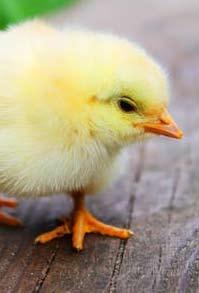
AQUACULTURE
Raising inland and open ocean fish, mollusks, crustaceans, aquatic plants.

APICULTURE
Raising bees for honey and wax production, and for pollinating crops.

DAIRY FARMING
Producing milk from cows, goats, buffaloes and so on.
AGRICULTURE
6 | GROWN at Home
husbandry) and plants (horticulture).
Most of us are accustomed to the term, ‘agriculture’ being used for food crops and livestock like: fruits, vegetables, herbs, cattle, poultry, pigs, sheep, and so on. Cotton, wool, lumber and rubber, however, are also agricultural products.


WORLD OF AGRICULTURE
HORTICULTURE
AGRICULTURE
is the production of plants for food, materials and aesthetics.
OLERICULTURE

Growing of edible plant parts, typically found in the kitchen garden such as: roots, stems, leaves, buds, seeds e.g., beets, broccoli, spinach, sorrel, beans.
LANDSCAPE HORTICULTURE
Plants grown for landscape design purposes: grass, shrubs, trees, vines.
POMOLOGY
Fruit crop production e.g., mangoes, oranges, bananas.
FLORICULTURE
The cultivation of plants for ornamental purposes: cut flowers, potted plants and foliage.

7 DEC 2020 - MAR 2021 |
GETTIn G
by Ethan Alleyne
As a social species, we rely upon others for the basic needs of life, from housing and electricity to running water and food. The ability to outsource our needs is a great convenience, but is it best, to bank on external sources for survival?
During World War II, when America’s food resources were heavily taxed, citizens were encouraged to grow ‘victory gardens’ to sustain themselves and their families, without relying too heavily on the system. Food, is one of the four basic physical requirements of
human life, alongside water, shelter and air, yet most of us grew up never being taught how to cultivate our own food. With chemical treatments + time + bounces and blemishes + the sneaky little ‘shrinkflation’ phenomenon, what we buy can often turn out, a smaller, slightly tattered, overall inferior counterpart of the fresher, tastier, healthier meal or ingredient, it could have been. Would not it be wonderful to take the quality of what we eat, into our own hands?
To a beginner, the idea of growing your own food can be daunting.

Where do you start? There are many options, but let us begin with a few preliminary questions. Are you ready? Do you have enough space? Are there any pests you should deal with before beginning? Should you stick to fruits and vegetables, or add livestock to the mix? The possibilities may seem overwhelming, so doing some research and dividing the project into bite-sized phases, may be ideal.
You might want to begin with three, easy crops, as opposed to something with legs, you will have to keep an eye on, lest it
8 | GROWN at Home
runs amuck. When you begin your research, it is important to remember your environment. Some foods may not do well in the Caribbean and growing techniques that work overseas, will not necessarily apply here. It is also important to note the time it takes for a crop to mature. For instance, spinach will mature within about one month. It, however, usually takes sweet potatoes 3-7 months, which is a relative blink compared to the years mango and golden apple trees require, although the process can be accelerated if these fruit trees are grown via grafting.
Of the three crops you start with, it would be good to choose at least one or two rapidly maturing crops,
with the others being mid-term or long-term crop(s). This will give you the gratification of seeing relatively rapid progress, while waiting for the late bloomers to deliver the goods.
In setting out to collect what you need, it is best to get quality equipment and protective gear, as opposed to substandard alternatives. will they last longer, if properly cared for, but chances are they will be more comfortable for longterm use. For instance, it


is a good idea to invest in proper garden gloves instead of basic disposable gloves. The sturdy, long-lasting quality of these gloves will allow for better protection from injury that could lead to infections such as leptospirosis. When handling equipment, it is good to be careful and find the best way to work, without straining your body.
While books and the internet will yield useful information, there are those who have
9 DEC 2020 - MAR 2021 |
STARTED
gone before you who can help, so it is always wise to reach out to a veteran gardener.
Once you have gathered the necessary items and information, create a schedule and stick to it! Starting is one thing, but disciplining yourself to be consistent in tending to the produce, is another. If, however, you give your garden the necessary attention, you will be sure to see the results.

10 | GROWN at Home 10THINGS TO HAVE BEFORE YOU BEGIN 1. Seeds (organic is preferred) 2. A good soil mix 3. Garden wear - sun hat, quality gloves and garden boots 4. Organic fertiliser e.g., chicken manure 5. Garden fork and shovel 6. Watering can 7. Gardener’s kneeling pad 8. Wheelbarrow 9. Planting containers –pots, half drums, seed trays 10. A useful guide - Grown at Home magazine All the best in getting started!
by Ethan Alleyne


This is India. She was rescued by The Ark and adopted by

Part of proceeds in aid of The Ark Welfare Society Barbados No Contact Digital Delivery

11 DECEM b ER 2020 |
Jordan -Lee, Ethan’s sister.




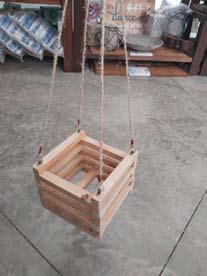

12 | GROWN at Home 8 Grown at Home combed the interesting your gardening better. Spare a look and some great your kitchen 1.LUCI ORIGInAL InFLATABLE SOLAR LAnTERn $40 - $50 https://www.facebook. com/naturecarewi/ photos/2101868346494254 NATURE CARE GARDEN CENTRE 2.GARDEn FORK THERMOMETER $24 https://naturecarewi.com/ NATURE CARE GARDEN CENTRE 3.BEEHOUSE $52 https:// naturecarewi.com/ NATURE CARE GARDEN CENTRE 4.HAnGInG PLAnTER $47 https://naturecarewi.com/ NATURE CARE GARDEN CENTRE 5.HERB $35 https://www.facebook.com/ seedburst/photos/pcb.364307836 5757185/3643078075757214/ SEEDBURST Items are available while stocks last.


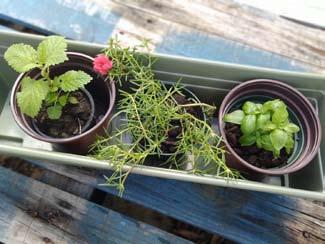
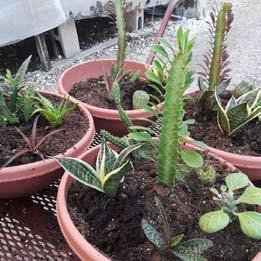

13 DEC 2020 - MAR 2021 | 8GIFTS FOR YOUR KITCHEn GARDEn Home magazine the island for items that will make gardening experience even Spare a moment to take get ready to shop for great Christmas gifts for kitchen garden. HERB BOWL $35 https://www.facebook.com/ seedburst/photos/pcb.364307836 5757185/3643078075757214/ SEEDBURST NURSERIES 6.FLORA AnD HERB PLAnTER $45 HERB PLAnTERS ALSO AVAILABLE $45 each https://www.facebook.com/seedburst/photos/pcb.364307 8365757185/3643078079090547/ SEEDBURST NURSERIES 7.SUCCULEnT BOWLS $50 each https://www.facebook.com/ seedburst/photos/pcb.3643 065475758474/36430653724 25151/ SEEDBURST NURSERIES 8.HERB TRAYS $45 each https://www.facebook.com/ seedburst/ SEEDBURST NURSERIES last. Prices are subject to change.
Sown and Grown in the Dry Season
by Cheryl Harewood
Perhaps you have thought about growing your own vegetables, but do not know when to plant them. The truth is, there are small vegetable garden farmers who plant their herbs and vegetables anytime and simply watch them grow.
An interest in vegetables and other home-grown produce peaked during the COVID-19 lockdown in Barbados, and could be considered to be at its highest level, even now. How do you know when to plant, and which vegetables grow better, in which soil? Suggested planting times for some plants and vegetables vary based on temperature averages. There are many other factors that will determine how well your plants will grow. Everything, from rainfall and wind, to temperature variations and the makeup of your soil, can be taken into consideration.
If it is too hot or too humid, some plants develop stress. Some experts say that when this happens, these plants can attract bugs, just like people attract colds and flu when they are stressed and run down.
It should be noted that due to worldwide climate changes some
Barbadian parishes still experience significant rainfall in December and January, so in these cases, it is best to wait a little later to start planting.
Let us take a look at two vegetables that can grow in the dry season (December to May) and see how they strive.
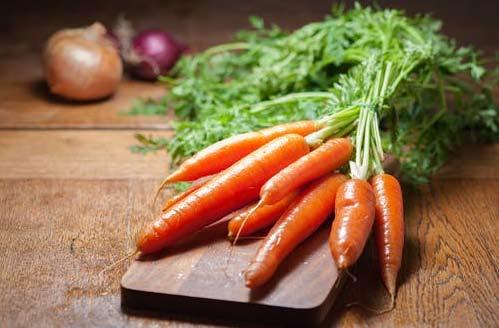
14 | GROWN at Home
Carrots
The first vegetable we will look at is carrots. It is hard to imagine a flourishing vegetable garden without carrots. They are actually pretty easy to grow from seeds - as long as you take account of a few golden rules.
Carrots hate being transplanted, so it is best to sow them directly where they are to grow. Start by removing all stones from the soil. If the root of a carrot hits a stone, it will not thrive as it should.
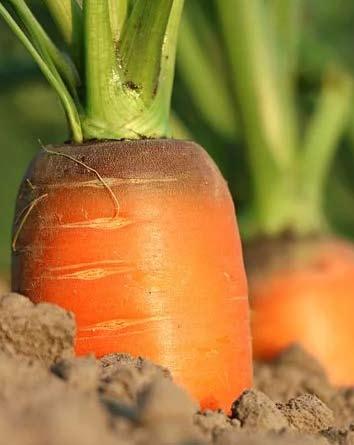
Beets
Beets are another great vegetable to plant during the dry season.

Plant the seeds 1-2 inches apart in a row. Cover them lightly with loose soil, and sprinkle the soil with water. You should see the plants sprouting in 7-14 days. If you want a continuous supply, plant the beets in several plantings, about 3 weeks apart from each other.
Beets can grow in full sun and in partial shade. They do not need special treatment and are rarely affected by pests. They mature in 6-8 weeks, making them an ideal crop for succession planting.
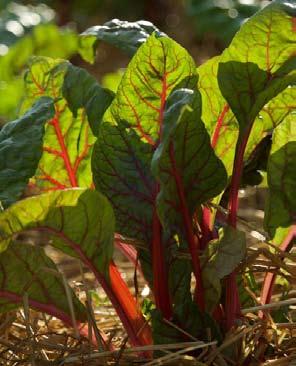
Before starting to sow, prepare your garden beds by removing weeds and enriching the soil with some mature compost and fertilizer. Remove large clumps of soil and rocks. Since the weather is dry, prepare and water the bed very well the day before you sow. It is best to plant seeds 1/2 inch deep and 2-3 inches apart, since beet seeds are actually a seedpod, that contains several seeds. This means they should not be planted too close to each other.
Happy Planting!
Make sure you mark out your seed rows. The seed drills should be about a quarter-inch (1 cm) deep, with rows spaced about six inches (15 cm) apart.
Sprinkle pinches of the seeds thinly along the row, then close the soil back to cover the seeds.
Carrot seeds are very small, so to make sowing easier, you can mix the seeds with dry sand, which will help to spread the seeds out within the row.
Water the seeds well at planting time and keep the soil evenly moist, until the seeds sprout, which should be in about 10-20 days. All young plants need adequate water. Do not let the soil become too waterlogged or the seeds will rot. When the beet plants begin to grow, let the soil dry slightly between watering. Water deeply and regularly during the dry periods. Water stress during the first six weeks of growth, often leads to premature flowering and low yields.
15 DEC 2020 - MAR 2021 |
You can say that Eugene Eastmond has mastered the art of growing much of her own herbs and vegetables. She also knows the importance of sharing what she grows with family, friends and members of her local church.
Growing food, however, goes way beyond providing for herself and others. She has somehow managed to marry planting food and recognising the awesome power of God, knowing that it is through His
design that she can sow and reap the fruits of her labour.
Today, Eastmond is proud of how she has turned her hobby of planting herbs and vegetables into a money-saving venture – seemingly passed down through the years by her grandparents.
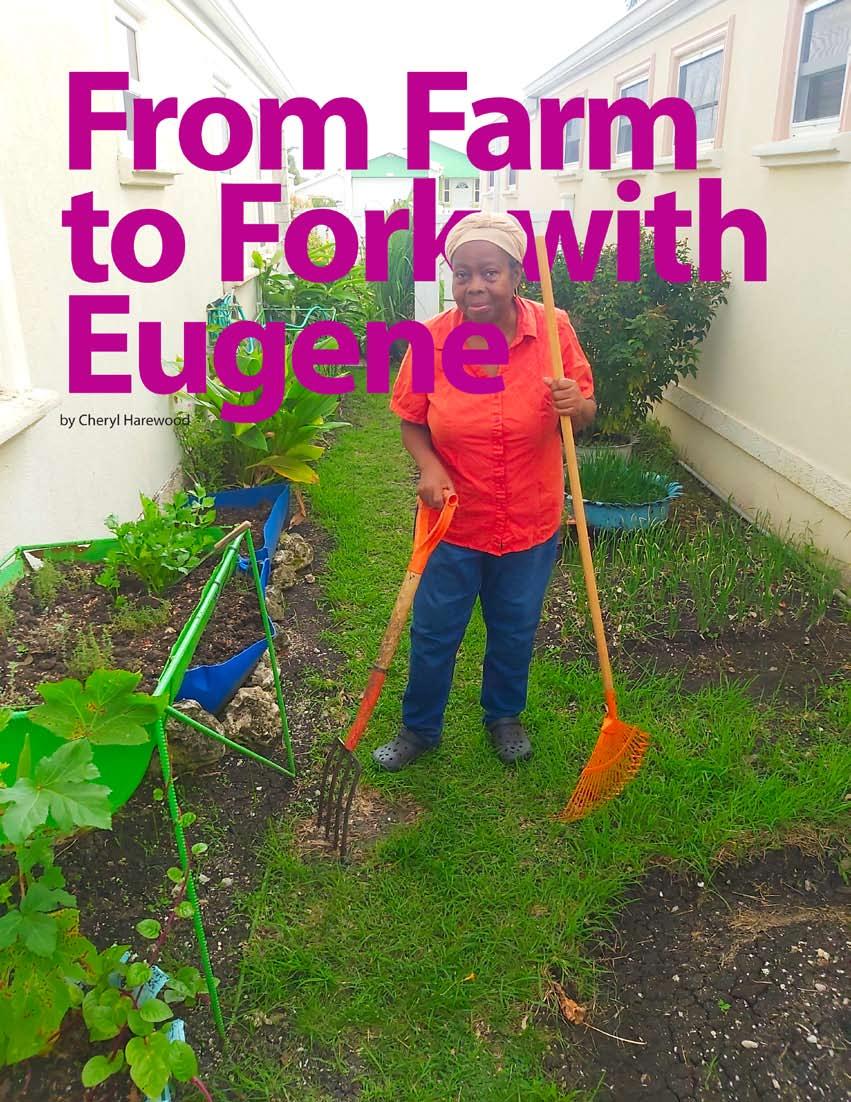
As she shared her story, Eastmonda retired principal - spoke of ‘those days’ growing up when farming and gardening were key ways and means of supplementing the family’s income.
According to Eastmond, “My grandparents worked in agriculture as agricultural workers. When I was younger, we had cows, sheep and pigs in my grandmother’s home in French Village, St Peter.
“When we moved to Rose Hill, St Peter, we kept a small garden where
we planted produce such as: lettuce, okras, cabbage and string beans.
“I grew up all my life with a garden,” the mother of two and grandmother of one informed.
After marrying and moving to Upper Carlton, St James, Eastmond continued planting, and even sold some of her produce to a local hotel, obviously making money on the side to cover family expenses.
It did not stop there. She took her green thumb to St Silas Primary School, where she was principal for 14 years. It was there that she planted a vegetable garden, together with teacher, Marjorie Ifill; general worker, Simeon Parris; and students.
“We planted: christophene, groundnuts, tomatoes, okras,
SHE, most definitely, has a green thumb and everything she plants in her backyard garden grows.
16 | GROWN at Home
cabbage, lettuce and string beans,” Eastmond informed.
With a plan in mind to stay active upon retirement, Eugene decided that maintaining a garden would be ideal.
“When I retired, I did not want to just sit around watching television. I decided to occupy myself, so I started backyard gardening six years ago at the Villages of Coverley,” Eugene disclosed.
Over the years, she has planted: chives, celery, cabbage, Chinese cabbage, aloe, garlic, peas, sweet peppers, turmeric, broad leaf thyme, cassava, sweet potatoes, okras, lettuce, groundnuts, tomatoes, ginger and watermelons.
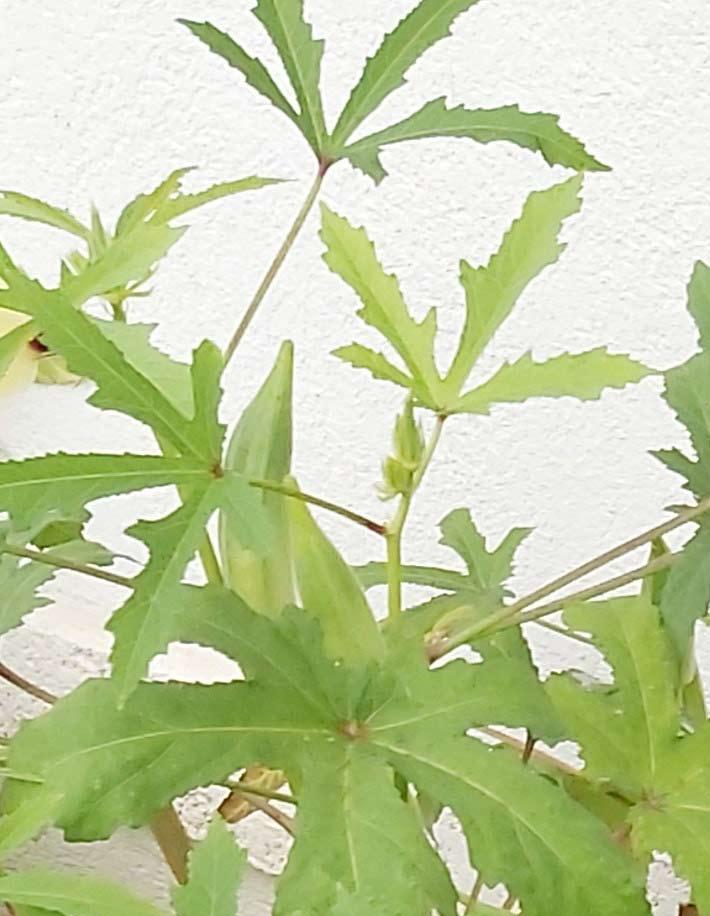
An interesting aspect of Eastmond’s sowing and reaping, is that she does not follow the traditional timing and way of planting and working her land. In other words, she plants in and out of season.
“As soon as I reap, I work the land and plant again,” the firm believer in God and minister of the Word stressed.
“I would rotate the planting but I do not wait until full moon or quarter moon to plant. I just plant. I even
plant ‘Bajan green peas’ all-yearround.”


While in recent times, she had reduced the amount of time she spends working in her garden, Eastmond is once more ‘gearing up’ to spending more time, not only planting herbs and vegetables, but also planting many of the beautiful flowers which surround her Christ Church home.
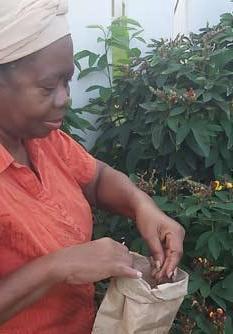
She sees the garden as her friend – a friend she can visit at any time. And she never fails to pray as she plants and harvests.
“I discovered that when I am doing gardening I can pray and meditate. I use the time to talk to God and pray for others. Life is better for me in the garden. I can draw comparisons to the Word of God with planting
17 DEC 2020 - MAR 2021 |
and sowing. Sometimes while planting, I use Scriptures on planting; and I also thank God for the sunshine and the rain. I can see the beauty of Earth and God’s creation. I go through the plants and say, ‘You’re my friend, I leave it to the Lord’. That’s what I live by,” Eastmond shared.
She added, “It’s amazing how one can plant and then see how God works to help these herbs, vegetables and flowering plants to grow.”
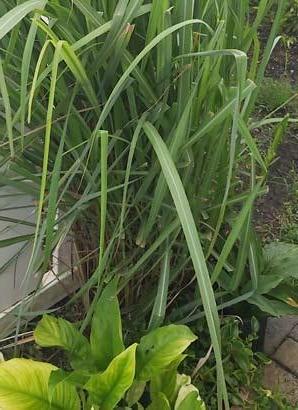
She also stressed, “I feel good when I can step outside my door and pick herbs and vegetables fresh from the garden. I’ve also been able to reduce my grocery bill significantly,” she said with a chuckle.
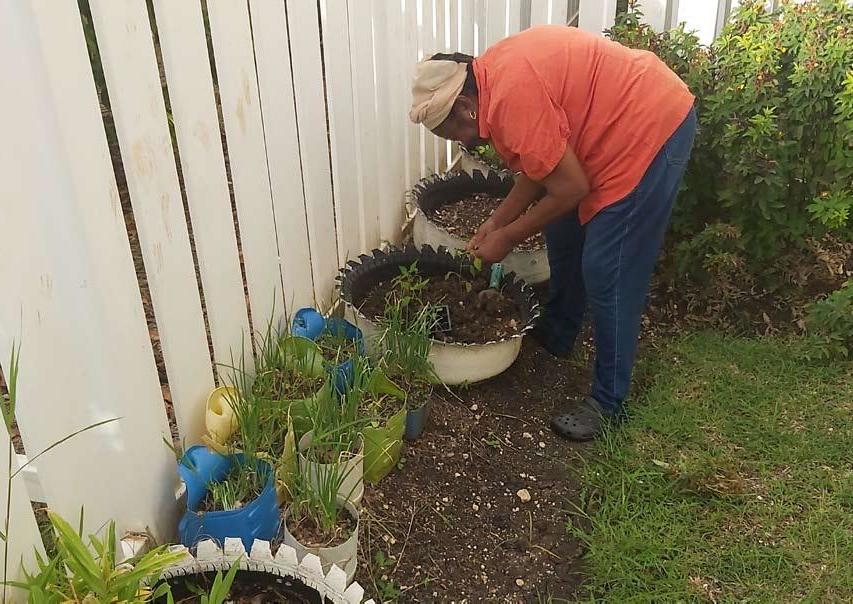
18 | GROWN at Home
Eastmond intends to maintain her gardening. She confessed that she has learned a valuable lesson throughout the whole process: “Everything God has done is beautiful. He has made everything, and His hand can be seen in everything we do,” she quipped.
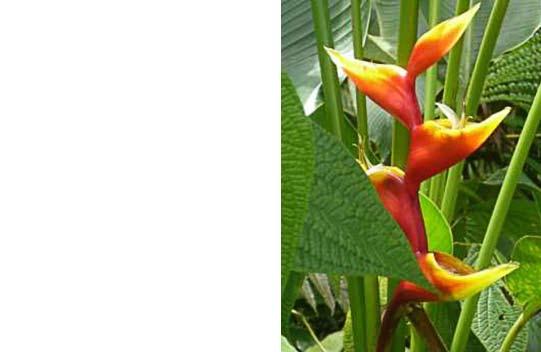

19 DECEM b ER 2020 | EMAIL: candaceutopia@yahoo.com Call 1.246.241.4536 floricuture ...is the cultivation of plants for ornamental purposes – cut flowers, potted plants and foliage DID YOU KNOW Valentine's Day, Birthdays, Christmas and Anniversaries. For those special occasions
ANOTHER GARDEN Revive your Senses
by Camille Alleyne
“ ‘Nature Care Garden Centre’, located in Lowlands, Christ Church, is a destination centre for experienced gardeners, garden hobbyists and everyone who loves nature,” says Russell Corrie, Managing Director. “It is where you come for peace and relaxation, as you acquire the things you need to create or upgrade your garden. It is more of an experience than a retail outlet!” Most Barbadians would agree, that it is just what we need to relieve all the stresses that came with the recent COVID-19 lockdown.
He continues: “While at the centre, you can experience nature through all your senses – the images of lush foliage, colourful flowers, butterflies and a pond filled with water plants, fish and turtles. As you continue to wander through our gardens, your sense of hearing will take you from the regular noises of life such as: traffic, chatter and construction, to the sounds of birds, soothing
chimes and calming music that streams throughout the property. The fragrant flowers, randomly placed around the garden, will also catch your attention in this environment. You may even rest awhile in the beautifully furnished gazebo overlooking the pond, as you treat yourself to refreshments from the ‘Dragon Fly Bistro’ ”.
‘Nature Care Garden Centre’ has everything for your garden – plants (including herbs), trees, grasses, pots, planters, hoses, sprinklers, rakes, gloves, fertilisers, organic pesticides and more – over 2,800

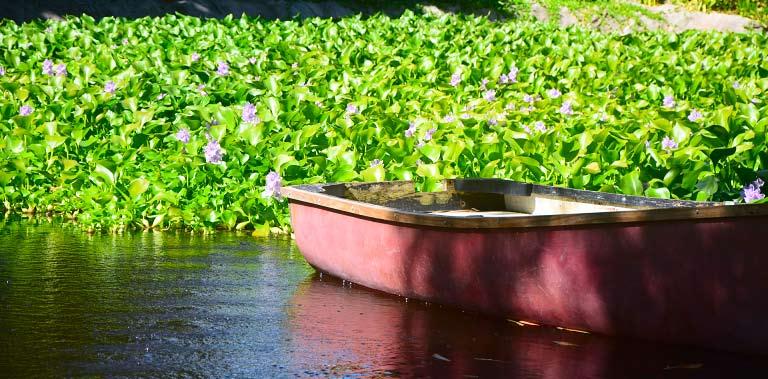


items to choose from. If you want to make a grand outdoor statement, consider utilising ‘Nature Care Garden Centre’s’ landscape design services, and include the implementation of garden structures such as: trellises, arches, pergolas, gazebos and decks. Consider water features like: ponds, fountains and waterfalls. Complete the picture with: lighting, sound and irrigation. You will find all you need for your garden at ‘Nature Care Garden Centre’.
It all began in 1983 with a lawnmower and weed whacker in the hands of two university students – Russell Corrie and David Yearwood. Eventually, the twosome attracted small landscape design jobs. When Yearwood left the business, Mahmood Patel, now of ‘Coco Hill Forest’, joined the enterprise and remained for a short while. As business developed, Corrie, who studied Economics at The University of
ADVERTORIAL
20 | GROWN at Home
the West Indies, Cave Hill, made the decision to become qualified in horticulture – an area that he had never planned to pursue as a career. He travelled to Orlando, Florida to obtain a certificate in Ornamental Horticulture, from Valencia Community College; and upon returning, Corrie focused on ‘Nature Care Garden Centre’ with new vigour.
Sometime later, seven acres of land was acquired in the present Lowlands location. This became the hub for the maintenance and landscaping operations, and for the growing of the plants. Over time, with more and more focus on the other company’s divisions, the retail entities which existed around the island began to close their doors, one by one. When only one remained, Corrie made the decision to move it to Lowlands. With a desire to see the acreage fulfil its potential, Corrie left our shores once again. This time, to tour the numerous garden centres in Europe. Out of this research, it was the United Kingdom model that inspired the garden centre of ‘Nature Care’. Believe it or not, the flourishing natural habitat you see today was only installed three years ago. Patrons find it hard to believe that such lushness was created in such a short space of time, making it perfect for weddings, anniversary luncheons and other lifetime memories. Up to recently, the venue was chosen by a gentleman to propose to the love of his life.
‘Nature Care Garden Centre’
is also a national Vocational Qualification (nVQ) training centre. This came about, when the company was one of the Barbadian entities chosen as a part of a World Bank-funded program, that retrained unemployed individuals in new areas of endeavours, so that they would be better able to rejoin the workforce. The centre received an award in 2019, for training over 200 individuals in Amenity Horticulture Levels 1 and 2. The company is privileged to have been asked to assist in the ratifying of new standards in the industry.
Successful nVQ training, the fact that the company provides employment to 125 Barbadians, employs an additional 30 in its St Vincent franchise, and empowers six staff members as shareholders in the business, are what Corrie calls his greatest achievements.
“I credit my staff and shareholders with sharing the vision and working hard with me to see it realized. It has been a combined effort to provide top quality products and services to the public for almost 40 years, and for that, I am very grateful,” concluded Corrie.
Anyone visiting the centre is sure to agree that ‘Nature Care Garden Centre’ is one of a kind – a revivifying environment, creating memorable experiences and providing for all your garden needs.
10 Tips for Creating a Peaceful Retreat during COVID-19
Mental and emotional health have always been important to your overall well-being. To create a healing environment for your mind and emotions, try establishing a garden getaway in your own backyard, and spend time detoxing after a long day.
Here are some tips:
1. Create a garden that will stimulate all the senses.
2. Decide on your surface cover whether you want hardscape or grass.
3. Choose a selection of plants that appeals to you visually. Select the colours, patterns and shapes you like.

4. Include fragrant flowers such as: ylang-ylang, lady of the night and frangipani.

5. Create privacy from road users and neighbours by installing a thick, fastgrowing hedge.
6. If you have the space, incorporate trees that produce sounds which you find soothing - like the Casuarina.
7. Consider the man-made sounds of garden chimes, or investigate the installation of an outdoor music system. If your budget allows, feel free to add water features. The sound of water is always so calming.
8. Create an outdoor room with suitable furniture.
9. Sometimes you may feel to have a ‘bite’ as you take in nature. If this is likely, invest in an outdoor 3-piece bistro set.
Nature Care Garden Centre

Lowlands, Christ Church. | Tel: 428 9420. Facebook https://www.facebook.com/ naturecarewi Instagram https://www.instagram.com/ naturecarebarbados/ Website https://naturecarewi.com/
10. Some backyards are safe and secluded, and may be enjoyed well after sunset. Lighting, therefore, would be a nice accent on walkways, and when placed in bushes and trees.

21 DEC 2020 - MAR 2021 |
by Camille Alleyne
Christmas is a special time of year. Many celebrate by attending church services early in the morning, in remembrance of the birth of the Messiah, Jesus Christ. Later in the day, it is customary for some of us in the Caribbean, to join with family and friends over a traditional Christmas lunch. Grown at Home, will look at some seasonal treats like sorrel, chocolate mint, coconuts, sweet potatoes and pigeon peas. We will give you guidelines to follow so that you may plant them in time for Christmas 2021.
Who can imagine the season without a glass of sorrel?
Sorrel is that tangy, fragrant, tantalizing beverage that practically every West Indian enjoys at Christmas.
Did you know what we call sorrel in the Caribbean, is totally different from a plant known by the same name, in other parts of the world? In many countries, the latter is a green leafy ingredient used in fresh salads; while here, sorrel is the red, hardy, external part of the roselle flower - which is actually the sepal, commonly referred to as the calyx.
Age of Maturity
5–6 months. Medium-term crop.
Classification
Species: Hibiscus sabdariffa L. Family: Malvaceae.
Origin
Sorrel is not indigenous to the Caribbean. Its origin is in Africa, but nowadays, it is grown in a number of warm tropical countries. For this reason, some of the common names for sorrel are Jamaican Sorrel, Florida Cranberry and Queensland Jam Plant. Other names are roselle, roselle hemp and rosella.
Uses
Most parts of the sorrel plant can be used - the flowers for teas; leaves for stir-fries; and calyces for jams, jellies, wines and drinks. Even strips taken from the stems are used in some cultures for making rope and fibre.
How Sorrel Grows
Sorrel is one of the easiest crops to cultivate. It loves humid, warm
climates and thrives on plenty of water, making it suitable to grow throughout our rainy season.
5CHRISTMAS TREATS TO GROW and EAT #1 Sorrel
Planting
The sorrel plant is grown from cuttings, seeds and seedlings.
Most soil types are suitable.
You may plant directly in the soil. Plant in well-drained soil to which you have added compost.
Seeds should be planted 1 m apart, about 1 cm deep, with about 4 seeds in each hole. If your space is limited, ½ m apart will suffice.
Alternately, you may plant in trays for a more controlled environment, away from pests. This way, you could transplant only those that survive.
Sorrel may grow up to 3 m tall.
As plants get taller, the limbs
22 | GROWN at Home
Sorrel

sometimes hang low, and some even touch the ground. That is why, you may choose to plant sorrel in raised beds, or insert stakes along the main stem, to which you can tie the plant for support.
Maintaining
The area should be weeded. To prevent weeds, consider mulching. The mulch also keeps the soil moist, and improves the fertility and health of the plant. Young plants should be watered regularly.
Harvesting
The sorrel plant takes 5–6 months to bear and continues for another 2–6 months.
When the calyces are plump, they are ready for harvest. Do not leave the calyces to get too dry before reaping.
If the trees seem not to produce abundantly in the first instance, still begin reaping. As you harvest, more calyces will grow and your plant will flourish.
Leave a few calyces on the tree to dry. These will eventually start to burst open. Use your hands to pry them completely open. Remove the small brown seeds and keep them to plant for your next crop.
Quiz
What does sorrel and okra have in common?
ANSWER: Both sorrel and okra plants belong to the hibiscus family. You may have observed that the sorrel plant bears a flower almost identical to that of the okra.
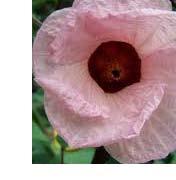
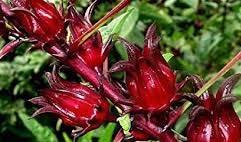
23 DEC 2020 - MAR 2021 |
Description
Chocolate Mint is an intensely fragrant plant, that combines compounds and essential oils to create the soothing aroma of mint, with a hint of chocolate. The result is a very appealing chocolate mint taste that is delicious as a tea, and distinctly flavourful in desserts, baked goods, sweets and other foods.
Chocolate Mint
Age of Maturity
4–8 weeks. At 12–15 inches. Short-term crop.
How Chocolate Mint Grows
Planting
It is best to start from cuttings or starter plants.
This plant likes cooler temperatures so plant in partial shade.
Maintaining
Once your soil is fertile, not much fertiliser will be needed.
Do not plant in sand or clay.
Use a light, well-rotted sheep manure, once every three months. Add about 1 tsp to a 4-inch pot of chocolate mint. Sprinkle it along
the perimeter of the soil, away from stem and leaves.
Keep well-watered and welldrained.
Trim tips and remove runners regularly, or it will get stalky. Trimming it will also keep its shape. Wherever it touches down on the ground, it will take root and can quickly overrun an area like a vine, so it is best kept in a pot.
Harvesting
Harvest as needed.
Harvest when your plant is bushy and established, that is about 3–4 inches.
Harvest leaves or entire stems (no closer than 1 inch from the soil).
Young leaves are more flavourful. To preserve harvested stems, place them in a small glass of water in the refrigerator. Change water as necessary.

Harvest frequently enough to keep the plant controlled.
Propagating
Propagate from the delicate tip cuttings of the plant.
You may also propagate from the runner, at the point where there is a growth node (that is where the offshoot starts).
#2 24 | GROWN at Home
Chocolate Mint
5ABOUT CHOCOLATE MINT
When planted alongside companion plants such as nettle, it is said to increase the essential oil content of the chocolate mint.
Trimming the blooms before the buds open allows the plant to keep producing leaves. The more leaves it has, the richer the taste, and the
Chocolate mint plants growing in shady areas tend to run; while those in cooler climates, placed in full sun, grow upward.
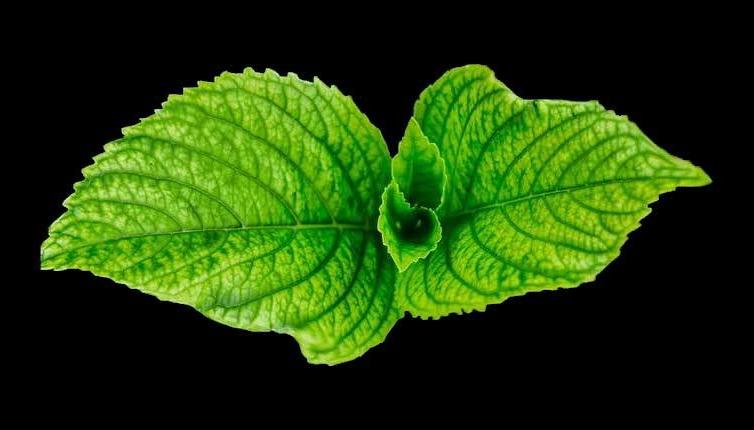

The plant is shallow-rooted, so it is not difficult to uproot the wayward offshoots.
Chocolate mint is a hardy plantit can tolerate the indoors when placed by a sunny window.
25 DEC 2020 - MAR 2021 |
#3
The coconut is one of the fruits that is used to epitomise all things tropical. The coconut tree grows wild - here, there and everywherein the Caribbean. Have you ever thought of growing this tree? It is a long-term crop so there is no better time to start than now. You would need to remember to be patient because the typical coconut tree takes 6–10 years to bear its first fruit. It may be a good idea to plant the dwarf version, which produces in half the time.
Description
Everyone in the Caribbean, presumably, knows what a coconut tree looks like; but just for the record, it grows from one single trunk, topped by giant, feather-shaped leaves, called fronds. The coconut has a tough, outer, green shell, which becomes brown and fibrous when dry. Within the outer shell is a large, hard, hairy seed. White edible flesh is found inside the seed. In young coconuts, the soft flesh is called ‘jelly’; it becomes hard and thick in older nuts. Refreshing coconut water is found
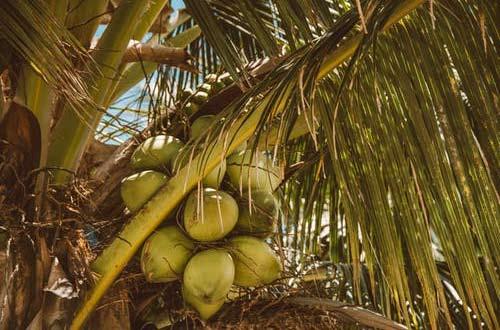
Coconuts
26 | GROWN at Home
inside the nut. Some say it takes time to acquire a taste for it.
Age of Maturity
Regular: 6–10 years. Dwarf: 3–5 years.
Classification
Species: Cocos nucifera L. Family: Arecaceae
Uses
Various parts of the coconut tree may be utilised for food, drink, oil, fuel or shelter. When the hard, edible coconut is removed from the nut and cut into bits, it is great as a snack. If grated, it adds a wonderful flavour to baked goods, deserts, and punches. Some people even use coconut in salads, or include it in stir-fried vegetables.
Coconut milk is simply the juice extracted from the dry coconut. It works as a substitute for milk in recipes, and completely alters the flavour of foods to embody that great coconut taste. In some Caribbean countries, it is added to rice and meats to make absolutely delicious dishes. The oil of the coconut is used as biodiesel.
Shelter or fencing may be made from woven palm leaves.
How Coconuts Grow
The coconut plant does not like long, dry, hot weather. It prefers hot and humid conditions, and grows in the tropics and sub-tropics. The tree survives where annual rainfall is 1000 – 3000 mm.
Planting
The coconut tree grows from the seed. Choose a dry coconut from
a healthy, productive tree so as not to germinate an infertile seed. Shake the coconuts and select one that contains water. Soak the whole coconut in water for 2–3 days. Strip the fibrous shell from the nut. Plant the nut in a container of potting soil, with the pointed side down. Cover 1/3 of the coconut with some soil. Water regularly to keep soil moist. Soil must be well-drained so that it would not become water-logged. The seed takes 2–3 months to germinate. At one year old, or when it is about 20 cm tall, transplant it into the yard, in full sun and in fertile, well-drained soil. If you are planting more than one tree, place them 7–12 m apart so that the fronds of the mature trees would not overlap.
Maintaining
Fertilise twice a month. Look out for pests and find ways to protect the plant.
Harvesting
Dwarf trees can bear in 3 years. Fullsize coconut trees take much longer. Harvesting from these dwarf plants is easier than from those taller varieties, because of their height.
HOW TO MAKE COCONUT MILK

nowadays, coconut milk is sold in cans, but decades ago we had to make it from scratch. If you want the milk fresh, without preservatives and processing, you can choose to make it.
Here is how:
1. Find a dry coconut that has fallen off the tree and still has a bit of green.
2. Husk the coconut to expose the nut. This is difficult to do, so get some help.
3. Remove the excess hair from the outside of the nut.
4. Crack the nut open with a hammer. Be careful!
5. Then, cautiously, use a knife to pry the coconut from the nut.
6. Cut the coconut into pieces, no more than 2 inches.
7. Chop in a blender with 4 cups of water.
8. Strain.
9. Best to use immediately in beverages and recipes.
10. Enjoy!
27 DEC 2020 - MAR 2021 |
#4 Sweet Potatoes
Sweet potatoes are described as tubers. A tuber is the thick, round part of the underground root system of a plant. It stores food; and it is from this part of the plant, new plants grow. Other tubers are Irish potatoes, ginger and yams.


It is said that there are hundreds of species
– red-skinned potatoes, purple, yellow, white and orange. The flesh of these potatoes also differs in colour and texture.
Age of Maturity
Usually 3-7 months. Medium-term crop.
Classification
Species: Ipomoea batatas
Family: Convolvulaceae
Origin
Most historians agree that sweet potatoes originated from the Americas, but some experts say Asia.
Planting
In tropical climates it can grow, practically, all year round. It is best to plant in 85 degrees Fahrenheit or below.
Prepare the soil 2–3 months ahead by adding a 3-inch layer of compost or manure.
Soil should be organic, crumbly and loose, for example, sandy loam and peat. Sweet potatoes hate clay soils and soils that become hard and compact.
Place the tuber in a container of water and after about a month, it will sprout from several places. Gently break off the ‘slips’ which are the sprouted pieces, and then plant them in beds.
Plant 6 inches deep, 8–10 inches apart, in an elongated bed on the ground. Planting in a raised bed, however, prevents it from taking over the entire garden.
The easiest way for beginners is to bury the sweet potato tuber directly in the soil where you want it to grow. It will sprout and grow quite easily and profusely. This eliminates the need to transplant.
Mulch the bed with hay or straw.
28 | GROWN at Home
Maintaining
Remove any weeds.
Trim the areas of the plant that begin to encroach on your garden. If in a raised bed, trim to prevent the plant from growing along the ground outside of the bed. Water regularly but do not allow the area to get water-logged. You have watered enough when you can gather a ball of soil in your hand and find that the soil is pliable and able to break apart. It should not be sticky.
Overwatering will produce waterlogged, cloggy soil. Ensure that the soil is well-drained, loose and fertile.
Fertilise initially, but not regularly. When the potatoes start to grow and root, they will produce their own food reserves.
It is common for caterpillars and grasshoppers to leave numerous holes in the leaves of your crop, but they rarely strip the entire plant. no need to be concerned, but if you prefer, use an organic insect spray pesticide.
Harvesting
Harvest when the leaves start turning yellow.
Wait for about 4 consecutive days of sunshine and then harvest. This would allow for easier cleaning, since the soil will more readily separate from the harvested potatoes.
Clear all of the foliage from the plant, in order to make the potatoes more accessible. Do not throw the foliage away.
Use a garden fork to dig 18 inches away from the base of the plant so as not to cause damage to the tubers.
Avoid the potatoes by digging about 12 inches deep, because damaged tubers have a shortened shelf life.
Gently unearth the potatoes.
Put aside the speared, lightweight, spongy tubers. These are useful in the next planting.
You may lay harvested tubers in the sun for about half-day before storing, to seal any broken areas.
The same beds may be reused for 2–3 years.
Preparing the bed for another planting
The following tips are helpful when preparing for another planting, according to Mark Valencia of selfsufficientme.com:
The damaged tubers, which were set aside, may be chopped into pieces and replanted in the same bed – some will become new plants and others will decay and become nutrients for the next crop.
Cleared foliage can be placed on top of the bed from which you harvested. This will become compost.
Liberally spread organic fertiliser or chicken manure on the surface of the bed.
Top with compost and more soil, and finish with a layer of mulch like sugar cane trash or wood chips.
Leave for 2-3 months before planting again.
Quiz
In what family would you classify sweet potato?

a. Hibiscus b. Morning glory c. Rose
AnSWER: b
29 DEC 2020 - MAR 2021 |
#5
Pigeon Peas
The pigeon pea is considered to be the most popular pea plant grown in Barbados, and maybe the entire Caribbean. It grows easily, almost anywhere. We see it cultivated in fields and we see it in front and back yards.
This plant is grown in hot, dry areas and is known by names such as: Gungo Pea, Red Gram, Congo Pea, Cajan Pea and Dhal.

Pigeon peas are especially utilised in the Christmas season. In Barbados, it is used for Christmas dishes such as jug jug, and rice and peas.
Age of Maturity
6–8 months. Medium-term crop.
Classification
Species: Cajanus cajan (L.) Millsp. Family: Fabaceae.
Origin
The Cajanus cajan can be traced back a few thousand years to India. Even today, Indians use the dry seeds, they call dhal,
30 | GROWN at Home
to make a thick soup or stew dish of the same name.
Uses Seeds:
The seeds of the pigeon pea can be eaten green or dry. Young seeds in some cultures are said to be eaten raw in salads or as a snack.

Plants:
The plants provide a windbreaker for other crops.
The plant is bushy and can get up to 3 metres tall. This creates a habitat for the birds; these birds eat the pests that attack the trees. It has a deep taproot, that transports rich nutrients from lower soil levels, so the entire plant can be used as mulch, or added to compost when trimmed. The nutrients will increase the quality of the soil in your garden.
Seed Pods and Leaves:
Young seed pods are said to be used in stir-fries. In some cultures, the leaves are used for medicinal purposes.
How Pigeon Peas Grow
The pigeon pea is a hardy plant, that loves dry, hot environments. It grows well in rainfall between 600 mm and 1000 mm per year. This perennial plant lasts 3–5 years; and the crop grows in a wide range
of soils, as long as it does not get water-logged. The pigeon pea plant can even survive in poor soil.
Planting
Ideally, seeds should be sown in the wet season. Growing from cuttings rarely succeeds. If you soak the seeds overnight before planting, it will increase the rate of germination. Plant in holes of 2.5–4 cm deep. Sow about 5 seeds per hole. Young plants must be watered regularly, but moderately. Do not plant in the shade. Remove and replant some of the seedlings after they start to grow, leaving 3 per hole. Space ½–1 m apart.
Maintaining
Pay special attention to weeding in the first 2 months. Plants will grow slowly at first, then vigorously. When they start to get too tall, trim to a desired height so that you can reach the pods when reaping.
Harvesting
The plants mature between 6 and 9 months. Some pods may be harvested green. Others may be left on the tree to dry, if you wish to harvest dry seeds to plant. Harvested pods are pried open, and seeds are removed by hand. After reaping, you may trim the plant in preparation for a second crop. Seeds must be kept away from moisture, and may be stored in the refrigerator for up to 3 days. Seeds may also be frozen.
5INTERESTING THINGS ABOUT THE PIGEON
PEA PLANT
1. Pigeon peas are very easy to grow.
2. The plant can provide adequate shelter for other smaller or younger plants in your kitchen garden.
3. Whenever you trim the plant, you may drop the pieces on the ground to be used mulch. This will add nutrients to your garden.
4. What you cut can also be used as healthful animal fodder for cattle, pigs and poultry.
5. The plant stores nitrogen, and releases it into the soil, so that other plants grown in the area can utilize this necessary mineral.
31 DEC 2020 - MAR 2021 |
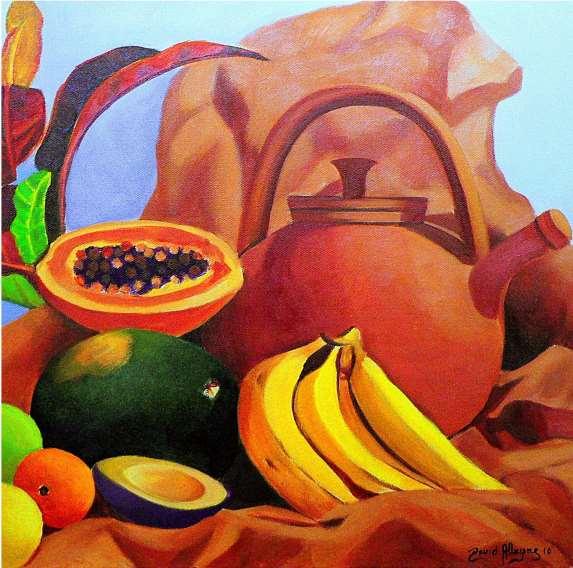


The Gift of Art Website davidalleyne.webs.com Gully T ree Art by DAVID ALLEYNE JOIN OUR ART CLASS! STUDENTS OF ALL LEVELS ARE WELCOME. For details, WhatsApp 1 246 828 0567 or Email davidalleyne.fineart@ gmail.com 1 2 4 6 5 7 12 3 8 9
T ree Plants

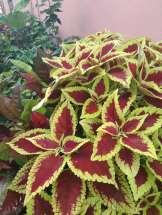
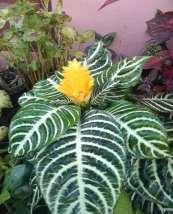

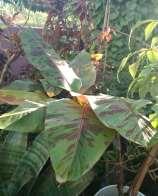
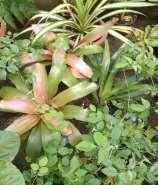
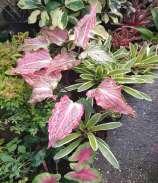

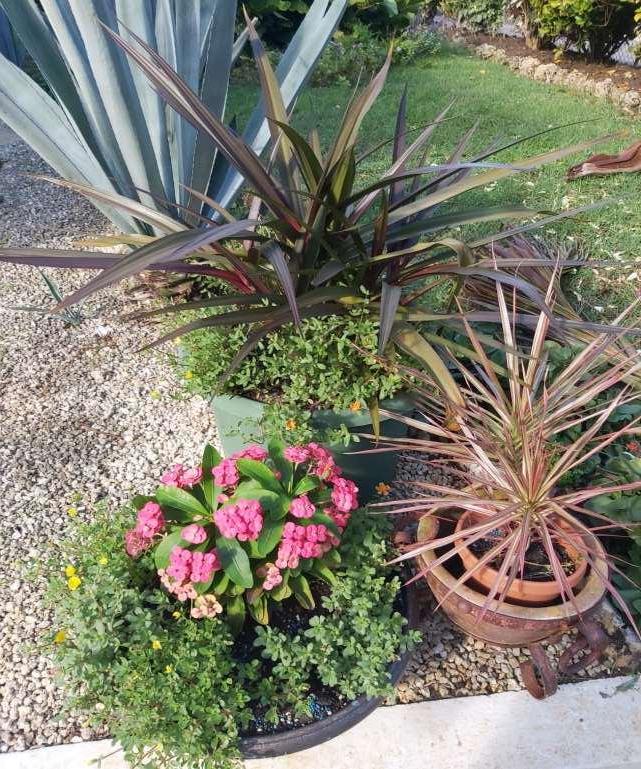
Gully
AND INTIMATE LANDSCAPES
WhatsApp 1 246 828 0567 Call 1 246 571 2389
by David Alleyne
F.E.E.D. Barbados
The Farmers’ Empowerment and Enfranchisement Drive (FEED), was established by the Government of Barbados through the Ministry of Agriculture and Food Security (MAFS). It is a programme aimed at reducing agricultural imports into the island, thereby ensuring national food and nutrition security.
The Barbados Agricultural Development and Marketing Corporation (BADMC), is responsible for the planning, implementation and management of FEED. The programme started recently and all participants will be required to take part in mandatory training, which is flexible and online. FEED, also accommodates persons with a desire to establish agricultural enterprises in a variety of farming systems.
Some Benefits of FEED:
1Through FEED, land allocation will get the attention of farmers who will operate on leased lands, ranging in size from one-quarter of an acre to five acres. Lands will be leased at a rate of $300 per acre, annually.

2In some cases, irrigation water will be provided at a subsidised rate of 0.66 cents per cubic metre. Allocations will depend on the type of farming activity in which the farmer intends to become involved.
Other services, materials and infrastructure will also be offered at subsidised rates, or free of charge, in order to assist the farmers with the initial start-up of their enterprise.
Once started, the farmers will continue to be taught and mentored by the Ministry of Agriculture and the BADMC’s team of qualified
3
4
extension
FARMERS’ EMPOWERMENT AND ENFRANCHISEMENT DRIVE (FEED) Are you interested in engaging in agriculture beyond your backyard? If you are, FEED wishes to assist by helping to establish your farm in areas such as: Open Field Crop Production • Hydroponics • Aquaponics • Apiculture (Beekeeping) Livestock Production • Blackbelly Sheep • Rabbits • And others Agroforestry • Fruit orchard production 34 | GROWN at Home
officers. These officers will offer technical advice and assistance to farmers, in areas such as: land preparation, irrigation, infrastructure, seeds, crop production, hydroponics, aquaponics, personal protective equipment and beehive boxes.
Some officers will be equipped with hand-held electronic devices. These will permit the in-field collection of production data. This data can, in turn, be uploaded in real-time to a common data collection platform.
5In addition, all participating farmers will be added to the BADMC’s text blast system, which will carry important agriculture-related notices and news such as: upcoming farmers’ meetings, training workshops, seminars, conferences, and weather forecasts, directly to their phones.
6As the FEED programme moves forward, marketing will be an integral part of its operation. Export markets will be explored and will involve the
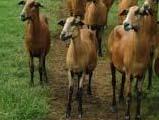
BADMC’s Pack House at Fairy Valley, Christ Church. This facility will act as a centralised marketing and distribution facility for produce from FEED. It is estimated that a minimum of 40 per cent of produce, which will be washed, graded, packaged and distributed, will pass through the Pack House.
In preparation for the start-up of FEED, the facility started supplying produce to several major retailers and hotels across the island. This was in a bid to build relationships and secure markets, in anticipation of the increased production.


FEED was officially launched on May 13, 2019, during a ceremony at Sunbury Plantation House, St Philip. The feature address was delivered by Prime Minister Mia Amor Mottley.
In her speech, Prime Minister Mottley gave her full support to the programme and its objective of feeding the population of Barbados and heightening the appeal of agriculture among at-risk groups in the society, such as the youth and those unemployed.
• The FEED Programme was conceptualised by the Minister of Agriculture and Food Security, Indar Weir, and his team at the Ministry.
35 DEC 2020 - MAR 2021 |
If You Don’t Grow It, Source It!
by Camille Alleyne
In March 2020, COVID-19 brought to the shores of Barbados, the news of our first two cases. This was shortly followed by curfews, then our island wide shutdown. Life changed overnight, and after stocking up for a few days and witnessing food supplies dwindling, we were happy to hear from our government that the country had enough to feed the population for quite some time. Yes, that was good to know … at least for the short-term.
‘ShopSe7en’ (pronounced Shop Seven) was not taken off guard. They were ready to serve the community during the crisis. ‘ShopSe7en’ is a supplier of fresh fruit and vegetables, exclusively by delivery, with delivery being offered within 24–48 hours. What sets ‘ShopSe7en’ apart is
customer knowledge, quality fresh produce and convenience.
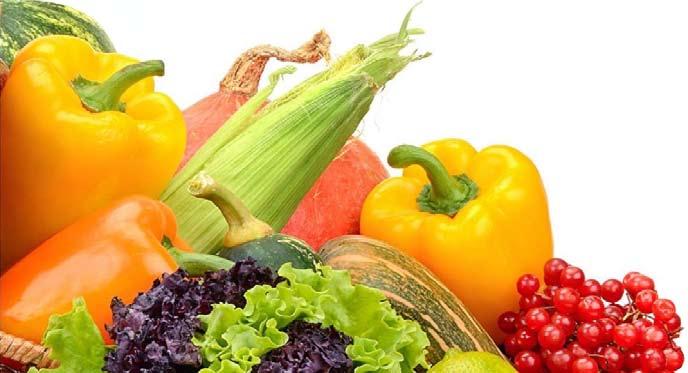
‘ShopSe7en’ was born in 2018, when owners, Adrian Fletcher and his wife, observed that the students of the Washington University of Barbados School of Medicine, located in Oldbury, St Philip, would walk approximately six kilometres, to and from, the nearest supermarket to shop for their groceries. On the way back, they would be laden with bags, pausing occasionally to rest their tiring hands. As time went by, some students began to hitchhike because of the distance. Concerned about their well-being, the Fletchers asked how they could help to make life easier. The students shared how they would benefit from having a more convenient food source.
It did not take the couple long to come
up with a solution. They decided to supply the students with the foods they most needed, which included: potatoes, onions, tomatoes, curry, milk, and drinks. Such began the Fletchers’ shop, right in their garage.
Fletcher, then set about creating an ordering list, using WhatsApp, which went through the university’s students’ guild. The 300 plus students would see the items, place their orders, and collect at an appointed time. It was an interesting experience as the students gathered regularly to get their pre-ordered, and prebagged items from the Fletchers’ home nearby. While, doing so, Fletcher and his family enjoyed socializing with the youngsters; and a cultural exchange ensued, since the students were from unfamiliar places, far away, like: India, Pakistan and nigeria.
In no time, it so happened that the list began to make the rounds with family, friends and beyond, causing their client base to increase.
When the university closed in late 2018, ‘ShopSe7en’, continued for a few more months, before briefly closing its doors in June of 2019. At the beginning of 2020, Fletcher - a Christian -
36 | GROWN at Home ADVERTORIAL
inquired of the Lord as to what to do at this juncture. After praying about it, he believed he was to re-open and officially register ‘shopse7en. com’. He believed he was not to have a stall, and not to have a storefront at his home - but to focus on deliveries, exclusively. He also heard the Lord directing him to build shopse7en.com - a websitewith the purpose of managing the orders and inventory. This was in January, just before the lockdown. Already possessing a clientele of family, friends, and friends of family, Fletcher, now 44 years old, restarted with a delivery-only model during the March COVID-19 lockdown, supplying quality fresh fruits and vegetables, island wide.
and dislikes, and I am eager to know each one by name.
“We were as prepared as we could be for the lockdown,” Fletcher explained. “I was really glad we built the website because we heard a few other delivery services were having horrors with WhatsApp - trying to keep a first-comefirst-served system. Our website kept a chronological order. The problem with WhatsApp (during the lockdown) was that every time a client made an adjustment or enquired about the status of the order, the entire conversation and order moved to the top of the list. Imagine navigating 500 ‘moving’ orders a day, adding its own chaos to an already extremely difficult time. Thankfully, we didn’t have that problem with our website. Having said all of this, I must admit that it was really, really tough going during the curfew. To a large extent, the feeding of the country greatly depended on delivery services like us. It was overwhelming, especially since cold storage for us was an issue, and still is, actually. n evertheless, the crisis trained us to be faster and better organised than before.
A satisfied customer commented, “At first, I was hesitant to shop with a delivery service for my fruits, vegetables and ground provisions, because I am very particular. I like to see what I am buying before I select them. I had asked ‘ShopSe7en’ to WhatsApp me their website and their weekly produce list. In spite of all this, I waited a couple of months before I actually ordered. I was glad I eventually made the decision to use ‘ShopSe7en’ because their produce is A-class. Everything was fresh and of a top quality. Sizes were more than acceptable, too. I was satisfied and look forward to doing continued business with them.”
If you decide to experience ‘ShopSe7en’, you will be pleased at how this modern-day fruit and vegetable supplier stands apart with its quality produce, effective use of technology, efficient service, and convenient delivery. All of this, and more, describes ‘ShopSe7en’. It is your own virtual market vendor.


“ ‘ShopSe7en’ is built on trust,” says Fletcher, “I encourage clients to tell us of their preferences so we can match their buying habits, or to call if there are any discrepancies with deliveries. This way, we can resolve it to the satisfaction of the client. I enjoy building relationships with my customers, noting their likes
“When we decided to charge a delivery fee, we were concerned that the public would choose to do their shopping elsewhere. We found, however, that the clientele who travel by bus, were happy to pay a small fee, which is actually not much more than the bus fare it takes to get to multiple locations in search for the items they want. Our delivery also saves them from having to lug heavy packages to and fro, and for this they are grateful. What they do now, is purchase their dry goods and toiletries from the supermarkets in person, and have us deliver their fresh produce straight to their door.”
Tel: (246) 820-2616
Website: http://www.shopse7en.com/ Email: shop7en@gmail.com Follow us on Facebook and Instagram

37 DEC 2020 - MAR 2021 |
SOLUTIONS WATER
by Camille Alleyne
Barbados is surrounded by water, and most of us can remember that during november 2020, it rained continually island wide for 5–7 days, and for the rest of the month, there were countless other showers. It is, therefore, unfortunate that there is a water crisis plaguing this beautiful island, leading to more households experiencing water shortages, with lockoffs extending for longer periods.
Water is essential to life. It is used for cleaning, washing, bathing, cooking, drinking, and farming, among other things. Some residents complain of having discoloured water, and this impacts on the quality available for consumption. Having sufficient water to irrigate our kitchen gardens is also important, and the amount used for our crops should not impinge on our drinking supply.
The question is, considering all of this: how can we safely sustain access to sufficient amounts of quality water for our well-being?
What is Potable Water?
Potable water is water that is safe for cooking and drinking. It is better to conserve our potable water for consumption, and collect waste water for use otherwise. Householders are encouraged to research water preservation, collection, recycling and purification solutions. This way, we can learn how to conserve our drinking water and recycle rain water in ways that can contribute to the production of our own food.

38 | GROWN at Home
Solutions for you to Consider
Water Harvesting
Water harvesting is the age-old process of collecting rainwater, instead of allowing it to run off. Agriculturist, Gloria Lavine is very concerned about the amount of water that runs off into the sea, without being harvested. That is why she practises water harvesting - on a domestic level. She says, that in a single, sustained, moderate to heavy downpour lasting 15 minutes, she can easily yield 55 gallons of water. “I have a fairly big roof - about 1000 square feet of impermeable surface and for every 1 inch of rainfall, I can collect as much as 620 gallons of water,” she explained. That is a lot of water, so in the rainy season, it can provide enough for her crops and for the animals she rears.
Householders can harvest water on this level, and this will significantly assist them with their activities.
Grey Water Recycling
Another solution is grey water recycling. This is a more technical procedure.
Greywater is the wastewater from our basins, sinks, washing machines and dishwashers. It is not potable water but it is not sewage, either.


There are ways for greywater to be collected, but it will require specialists to advise and install the necessary systems. One way to utilise greywater is to collect it, allow the sediments to settle, then properly treat it before using it for purposes such as: flushing toilets, cleaning yards, washing vehicles and of course, irrigating our kitchen gardens.
Producing our own food is vitally important, and our food security is dependent on our water security. Let us implement certain methods, such as water harvesting and grey water recycling, to cut out wastage. That way, we will have enough for the crops we cultivate, and the animals we raise.
39 DEC 2020 - MAR 2021 |
At the incipience of the sophisticating of mankind in Africa, Europe and Asia, farming was a symbol of wealth. In fact, the ownership of land and property gave birth to the development of laws: for laws were created to protect the landed-class, who in one form or another owned farms. Whether this be in the form of persons owning land that they had others working in the fields or whether they had lands with animals that they made a sport out of hunting and killing, it amounted to the same thing - farming.
With the advent of the Industrial Age, however, there was a marked decline in those persons involved in farming. Many persons believe that this was due to the machines of the time, replacing man-power. This is not the complete truth. There was another aspect of farming, rarely dealt with, that led to farming losing its place in the sun – slavery. Many persons associate this word with the Transatlantic Slave System and thereby Africans. This is not quite true. The Europeans were also victims of the avarice associated with farming. The Romans when they captured persons in times of war enslaved them. They would become field slaves or house slaves. The work associated with being a field slave was pure drudgery.
The English, well known for the role that they played in the enslavement of Africans to work in their fields, were also victims of slavery themselves. For it was when Pope Gregory the Great saw some English slaves in Rome and declared them ‘not Angles but angels’ we begin to appreciate how entrenched slavery was in civilisations. Throughout Europe, there were people who were
A LITTLE-KNOWN FACT ABOUT Farming
to cities to escape the drudgery of their enslavement. Even, the laws tied them to the land. In France, the peasant class revolted because they were starving to death, they too were tied to the land. The fact that it was not labelled slavery does not negate the fact, if all the requirements are fulfilled.
by Candace Waldron
labelled as serfs in some places, peasants in others, and villeins, in still other places. Each may have had a different variation, but similar circumstances. Russia is notorious in the way it allowed those labelled as serfs to be treated, as is France and England for their peasants and villeins respectively. One, however, wants to focus on England, who Cecil Rhode declared to an audience of schoolboys, that being born there was akin to winning “…. first prize in a lottery of life”, was pure hell for the landless class! There was a surplus of labour and these persons were treated like slaves, (this is similar to the circumstance of Africans and descendant of Africans) and in fact had laws passed (Statutes of Labours) which fixed horrific penalties for runaway villeins. These laws allowed for branding, slavery and death - this should also be familiar. The word villein means field hand. These persons exchanged labour for homes and a little property to plant crops, they were given wages that were so low that they literally were always on the brink of starvation. When the Industrial revolution offered higher wages, they left the land in droves. In fact, before the advent of the Industrial Age the peasants, the serfs and the villains were moving
In the Americas, the Europeans refined this method of creating wealth through the land - the Transatlantic Slave System. This was not birthed out of thin air; this was based on the way Europeans gained wealth - the disenfranchisement of the poor or the helpless. This is not to say that the Africans and Asians did not utilise this method, they did. Throughout history mankind has used every method - notorious and nefarious - to create wealth. The enslavement of Africans was not a new concept, this has always been a method to become wealthy. Farming has, however, suffered from this abuse. The peasants ran from farms as did the Asians and the descendants of Africans. Booker T. Washington in his writing stated “[n] o race can prosper till it learns that there is as much dignity in tilling a field as in writing a poem.” Due to the way persons of all races were used and abused through the Ages in farming, they do not socialise their children to view farming or agriculture as a worthy profession. Therefore, farming and professions associated with the land continue to be viewed with contempt. Hence, there is now a battle on to change this mindset created by centuries of abuse.
Candace Waldron is a businesswoman (see opposite, and pages 2 and 19).
© 2020 Candace Waldron
40 | GROWN at Home


41 DECEM b ER 2020 | Extra educational support Individual attention Primary, Secondary and Tertiary level studies Homeschooling GET EXPERT TUTORING FOR ALL AGES Find the help you need: Choose to get an assessment before you begin. Find out if critical steps were omitted during the learning process. Build a solid foundation in education that prepares students for life. 1 (246) 241 4536 candaceutopia@ yahoo .com
Coconut Biscuits
This recipe is not sweet, but it is nutrient-filled. Pay attention to the consistency of the mixture if using all-purpose flour, instead of coconut flour, because they both give different results.

INGREDIENTS
1 cup coconut flour or 1 cup all-purpose flour
¼ cup shredded coconut
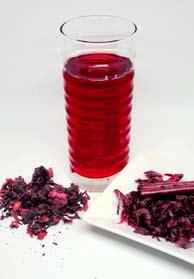

9 TBS coconut sugar or 9 TBS turbinado sugar (unrefined) or 9 TBS brown sugar (unrefined)
1 ½ TBS baking powder
¾ cup milk
2 eggs
DIRECTIONS
Set oven to 400°F/200°C.
Combine all the dry ingredients.
Mix thoroughly.
Beat the eggs and stir into the dry mixture.
Pour the milk, and mix until it is completely soaked into the mixture.

The consistency should not be wet, but damp and all ingredients clinging.
Roll into a ball and pat into a small circle about 2 ½ inches in diameter and ¼ inch thick.

Place on a greased baking sheet about ¾ inch apart.
Bake for 20 minutes.
WHOLESOME RECIPES KATHY’S KITCHEN
 by Kathy Pilgrim
by Kathy Pilgrim
42 | GROWN at Home
*TBS – tablespoon
WHOLESOME RECIPES FROM KATHY’S KITCHEN
Kathy Pilgrim is a food blogger, focused on inspiring wholesome eating practices, and health and wellness. Look out for a course by Kathy, aimed at helping persons manage stress and develop discipline in their eating habits. You may find Kathy’s Kitchen on Instagram@kathyskitchenkreations.
©2020 Kathy Pilgrim

Coconut Cake
INGREDIENTS
2 cups shredded coconut
2 ½ cups all-purpose flour
2TBS baking powder
½ - ¾ cup coconut milk or regular milk
3 eggs
¾ cup turbinado sugar or ¾ cup unrefined brown sugar
DIRECTIONS
Set oven to 400°F/200°C. Mix all ingredients thoroughly to a stiff mixture. Bake in a 7-inch round cake2 pan/Pyrex dish for 25–30 minutes.
Insert a cake tester or long toothpick or thin fork. If it comes out wet, return to the heat for another 5 minutes.

According to healthline.com, although coconut is not a significant source of vitamins, it does contain some important minerals such as: manganese, copper and iron. Manganese is essential for bone health and the metabolism of carbohydrates, proteins and cholesterol. Coconut is rich in copper and iron, which form red blood cells and selenium to protect our cells. Coconut may help control blood sugar, and it contains antioxidants that help protect cells from oxidative damage. The oil (MCT oil), contained in coconut, is said to protect the heart.
INSTRUCTIONS
Concentrate
Bring all the ingredients to the boil for 10 minutes. Reduce to simmer for 15 minutes. Leave to steep overnight.

Drink
Mix 4-6 TBS concentrated sorrel with 12 oz. of water and sweeten. Sweeten to taste with unrefined brown sugar to maintain the nutrition of the drink.
Naturalfoodseries.com explains that there are some very important nutrients in sorrel, such as: vitamin C, magnesium, vitamin A, manganese, copper, iron, potassium, vitamin B6, riboflavin, phosphorus and calcium. Sorrel helps to reduce mucus, aids with digestion, balances hypertension (blood pressure), and can improve sinus infection. It also helps build the immune system, improves kidney health, and detoxes the body, among other benefits.
43 DEC 2020 - MAR 2021 |
/ *tsp – teaspoon
INGREDIENTS 8oz.
4
30
4
12
¼
Sorrel
dried sorrel
sticks cinnamon
whole cloves
cinnamon sticks
cups water
- ½ grated nutmeg
DEFInITIOn OF Food Security

“Food security exists when all people, at all times, have physical and economic access to sufficient, safe and nutritious food that meets their dietary needs and food preferences for an active and healthy life”.
(World Food Summit, 1996)

ADVERTISE WITH If you want to REACH 87,000 Males and females, 25 years old and over Homeowners and householders Individuals concerned about food security Garden enthusiasts Health enthusiasts Call 1 246 571-2389 or email grownathomecaribbean@gmail.com for more information.



©2020 Grown at Home Magazine





































































































 by Kathy Pilgrim
by Kathy Pilgrim







